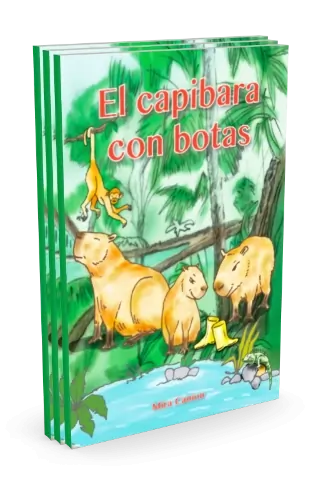About Mira
 Mira Canion is an energizing presenter, author, photographer, stand-up comedienne, and high school teacher. Mira is best known for her spontaneous creativity and quick wit, not only as former CCFLT president and notorious pirate but also in the classroom. She has been captivating middle and high school students for 20 years with her enthusiasm, high energy, and passion. She has developed innovative approaches to instruction that include storytelling, drama, novellas, music, videos, photos, and technology.
Mira Canion is an energizing presenter, author, photographer, stand-up comedienne, and high school teacher. Mira is best known for her spontaneous creativity and quick wit, not only as former CCFLT president and notorious pirate but also in the classroom. She has been captivating middle and high school students for 20 years with her enthusiasm, high energy, and passion. She has developed innovative approaches to instruction that include storytelling, drama, novellas, music, videos, photos, and technology.
Mira is the author of several popular CI novels: El capibara con botas, Agentes secretos y el mural de Picasso, Tumba, Piratas del Caribe y el mapa secreto, Pirates francais des Caraïbes, Fiesta fatal, Agua tóxica, Rebeldes de Tejas, Los bucaneros y el Templo del Jaguar (La Vampirata), Rival, La France en danger et les secrets de Picasso, Le capybara botté, as well as teacher’s manuals with reading strategies and activities, simplified non-fiction texts, and visuals.
Mira’s Mission Statement
“In my life’s work, I strive to inspire and to support playful, thoughtful, and purposeful educators in their quest to engage today’s learners by creatively designing wells of resources that they can draw upon when they are thirsty for a more productive and meaningful work life.”

Mira’s first published graded reader, Piratas del Caribe y el mapa secreto, positively changed the way teachers and students utilized beginning Spanish readers, as complete, stand-along units. Mira’s vision, when she started writing, was to make students aware of geography and history while learning Spanish through memorable characters and storylines.
One of Mira’s specialties is literacy in world language instruction. She has presented several times at the Colorado Council International Reading Association Conference (CCIRA). Mira always stays current in literacy instruction by learning from other content area specialists. She has participated in workshops by international-renowned literacy experts, such as: Cris Tovani, Donalyn Miller, Lester Laminick, Deb Miller, Stephanie Harvey, Kylene Beers, Kelly Gallagher, Penny Kittle, and Adam Gidwitz.
Mira also excels in writing intriguing storylines in easy-to-read Spanish, scaffolding texts, and creating activities for the first-semester beginner. She firmly believes that vocabulary instruction is the heart of a lesson. Mira uses whole-class gestures, Total Physical Response, her own professional photography, puppets and stuffed animals, a myriad of props, bilingual lists of words posted in front of students, question word posters, and pneumatic devices to deliver vocabulary in manageable chunks.

Mira readily adapts commonly used activities. If activities are mainly just busy work, she adapts them so that they have a real world purpose, are engaging to kids, and they help learners acquire a new language. One example is how Mira took the provided flash cards for the clothing unit of her mandated textbook and created a sentence bingo game. She added random prices and called out full sentences regarding how much she paid for each item.
Mira has a very long history of presenting at state, regional, and national conferences as a way to contribute to the world language profession. Her presentations have been rated highly by attendees, including her sessions at ACTFL’s annual convention, numerous ‘Best of’ sessions. Mira provides teachers with valuable insights, practicable activities, and they are delivered in an entertaining, humorous way.

Most recent presentations
ACTFL, Fake Reading No More: Developing Language with Shared Texts, November 2023
What can learners read without faking it? When language proficiency is the goal, learners must be able to read significant amounts of text. There is no time for fake reading. Give students what they can read and what they need. See how to structure classroom discussions that build co-created texts.
TCI Maine, Keep Kids Reading: Conversing through CI Novels, October 2023
How do we best use CI novels? When we connect authentically with learners through the pages of a book, it can be the best of both worlds. We can strengthen our relationships and build literacy skills. It starts with reading the room before reading the book. Practice creating and asking questions that:
- incorporate the book’s core vocabulary.
- connect learners to the main character’s traits and conflicts.
- deepen critical thinking about a book’s themes and a learner’s role in the world.
Asking Questions that Matter
Ever feel like you don’t know what to do with a reading or an image? Do you ever mindlessly click through slides of questions? How can we ask compelling questions when we read with students? Learn protocols that generate connected, meaningful questions to use with texts and images alike.
Authentic Assessments: How to Really Grade Reading Comprehension
Do reading assessments accurately measure how well learners make meaning of the text? Do they inform daily instruction? Do teachers model and practice the reading skills they assess like finding the main idea? Should only authentic texts provide assessment data? See how reading strategies can generate assessment data and improve instruction.
How to Quick-Read a Novel
Have you ever wanted to just open a novel and begin reading? Now you can. See how your joy of reading can become the path to purposeful instruction when using novels and extended texts. Thinking caps required.
Absolutely Insightful Assessments: Connecting Better with Students
Recently, there has been little time for meaningful relationships. The heart of teaching is connecting with students. Could exams create deeper insights into a student’s proficiency progress and create more trusting relationships? Absolutely! See how collaborative assessment tools utilize learners’ constant feedback to drive instruction.
Pre-Teaching Vocabulary for Novels: Setting Students Up for Success
What do you mean I should pre-teach vocabulary? Isn’t that the purpose of reading? See how a series of steps can help you infuse your classroom instruction with background knowledge that increases reading comprehension levels.
Active Input: Three Strategies that Improve Evaluation Scores
How can input-rich classroom teachers score well on evaluations? Administrators like to see minimal teacher talk, ample student-peer interaction, higher-level thinking, and students directing their own learning. Learn three strategies that score high in these evaluation categories while keeping comprehension-based approaches in the forefront.

Other presentations in reverse chronological order
- Evidence Chains: Engineering the Complexity of Learning for All Students, co-presenter Toni Theisen
- Appropriate Scaffolding: Pathways to Literacy, co-presenter Laurie Clarcq
- Deeper Insights: Reading Texts with Compassionate Eyes
- Peace, Love, and Proficiency: Where Methodologies Meet, co-presenter Kara Parker
- Creating Comprehensible Cultural Input
- Connecting Classroom Discourse for the Novice Learner
- The Proficiency Game-Changer, invited keynote speaker
- Connecting Culture and Students Through Novels
- Interactive Input: Beyond Simple Questions and Personalization
- Delivering Vocabulary through Classroom Discourse
- Raising Reading Comprehension: Thinking and Talking
- Keeping Everything Comprehensible
- Reading: The Acquisition Game Changer
- Authentic and Created Texts: Goal, Task and Fluency
- Wired for Story
- Creating Activities that Spark, Ignite and Energize
- Moving Background Knowledge to the Foreground
- Building CI: One Chapter at a Time
- Reading is Thinking: Making True Learning Visible,
- Seven Activities that Spark, Ignite, and Energize, co-presenter Lisa Lilley, 2016
- Engaging Students with Relevant Instruction, whole staff workshop
- How to Balance Meaningful Lessons with Approved Curriculum, co-presenter Lisa Lilley;
- Making Interpersonal Speaking Visible through Can-Do Statements, co-presenter Michele Whaley
- How to Deepen Reading Comprehension
- Show and Tell: Increasing Vocabulary to Boost Authentic Communication, co-presented with Lisa Lilley
- Staying Afloat in the New Colorado Evaluation System
- Five Insanely Interactive Reading Activities for an Evaluation-Crazed World
- How Brain Science Can Improve our Instructional Approach to Reading
- Get Them Ready “Languages and Literacy”
- Bringing Reading to Life in World Language Classrooms
- Reading Strategies and Materials: Stimulating Students to Drive Instruction
- Common Core and TPRS
- Seven Irresistible Activities that Connect Teens with Reading
- How to Delight Teens with the Magic of Reading
- Three Vocabulary Strategies that Will Change How Kids Communicate, co-presented with Ya-Wen Chang
- Completely Captivating Activities Kids Crave
- Turn on Proficiency with Cell Phones and Social Media
- How to Captivate Teenagers with Reading,
- Novel Ideas: Squeezing Out the Most Comprehensible Input from Novels and Stories
- Generating Student Input through Humor, Tech, and Stories;
- Reading Strategies for the 21st Century
- Bringing Reading to Life
- Effective, Engaging Approaches to Language Instruction
- Exploring the Wealth of Cultural Perspectives to Promote Authentic Communication
- Bringing Novels to Life
- Treasures of Culture, History and Geography Discovered through Language
- Lyrics as Literacy: Let Shakira Read to Your Students, co-presented with Bryce Hedstrom
- How to Win Amigos and Motivate Students, co-presented with Biddy Casey
- Saw Dick, Saw Jane, See Paco: Teaching Reading Strategies